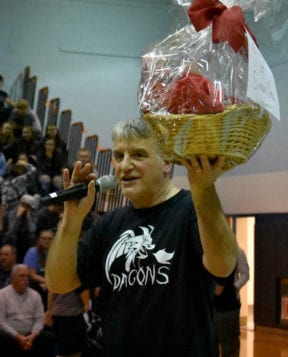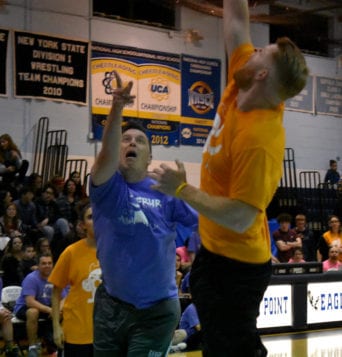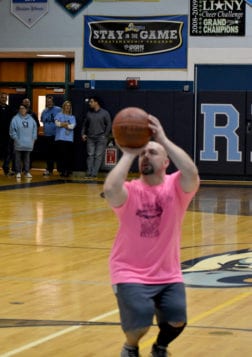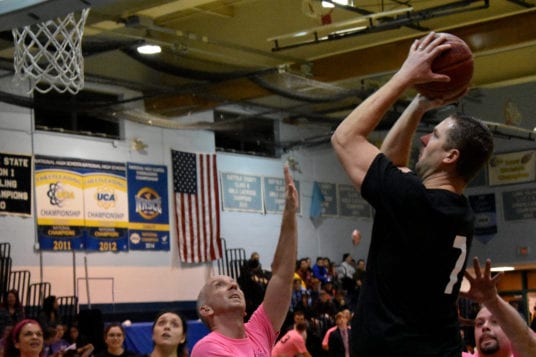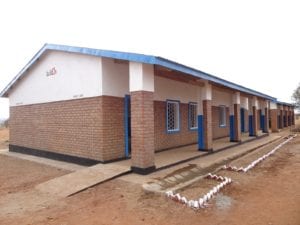By David Luces
Honesty and service — that’s what the owners of Rocky Point Jewelers say have been the mainstay of their shops for 40 years.
Originally born from a coin collecting hobby between father and son, Anthony Bongiovanni Jr., the general manager of the store, said that after he graduated high school he and his dad hatched the idea of opening a small coin shop. The coin shop eventually turned into a full-fledged jewelry store.
“I realized early on though that jewelry was the way to go for a daily business — so we went in that direction,” Bongiovanni said.
From there, Bongiovanni would pursue and receive a graduate gemologist diploma from the Gemological Institute of America, the highest degree awarded by the institute. He also holds the title of certified gemologist with the American Gem Society.
“He meant everything to the store. He was here every day — he was a fixture — always there to lend encouragement to the staff.”
— Anthony Bongiovanni Jr.
Bongiovanni said he learned much from his father.
“My father taught me honesty and hard work,” he said. “He meant everything to the store. He was here every day — he was a fixture — always there to lend encouragement to the staff.”
Anthony Bongiovanni Sr. passed away in 2011, but his impact on the store and the community remains.
“My father was a big influence — he was a great man,” Ann-Maria Bongiovanni-LaBella, who works with the family business, said. “I see a lot of my father in my brother.”
Bongiovanni-LaBella worked as a secretary for many years in the Hauppauge area until that company went under. With some convincing from her father she began working at the store in 1984.
“Who would’ve thought it would’ve come to this,” she said. “[I remember] we started out with homemade displays my mother would make.”
Over the years, the store has seen an expansion in size, and the family opened a Rocky Point Jewelers branch in Stony Brook.
The Bongiovanni siblings point to customer service as essential to running a success business.
“Anyone that sells retail will tell you that it is a different environment now than it was years ago,” Bongiovanni said. “You’re competing these days with not only other retailers but big box stores and online [shopping].”
The main store’s general manager said local jewelers like himself still offer services that are hard to find elsewhere.
“If you need a ring sized, a chain fixed, a watch fixed or something custom designed — that is something that can’t done on the computer — you have to see a professional for that,” he said.
Bongiovanni-LaBellla said you learn how to read people and get a sense of what they want.
Many customers have become personal friends over the years.
“Some of these customers I’ve been seeing for close to four decades,” Bongiovanni said. “You know them, you know their children, now we are meeting their grandchildren.”
Bongiovanni’s sister said she sees her customers at the post office, at Stop&Shop and at the bank.
“Generations of families have come here,” she said. “We try to keep people happy — your biggest advertisement is word of mouth, it really is.”
“We try to keep people happy — your biggest advertisement is word of mouth, it really is.”
— Ann-Maria Bongiovanni-LaBella
Theresa Armone, who has worked at the store for more than four years, said it’s the level and quality of service they provide that has kept customers coming back all these years.
Those who work at Rocky Point Jewelers agree the store works hard to earn the customers’ trust.
Bongiovanni said people entrust them with their valuables and sentimental objects and it means never compromising their standards.
“Times change, but it doesn’t mean your level of quality or service has to change — we try to improve on services as much as we can,” he said.
The general manager said with the work ethic instilled in him by his father, good employees and a little bit of luck, the store is still around 40 years later.
“It’s a tough retail environment out there,” he said. “There’s no two ways around it, but you always have to strive for better.”
Rocky Point Jewlers is located at 29 Rocky Point-Yaphank Road and 137 Main Street, Stony Brook.



